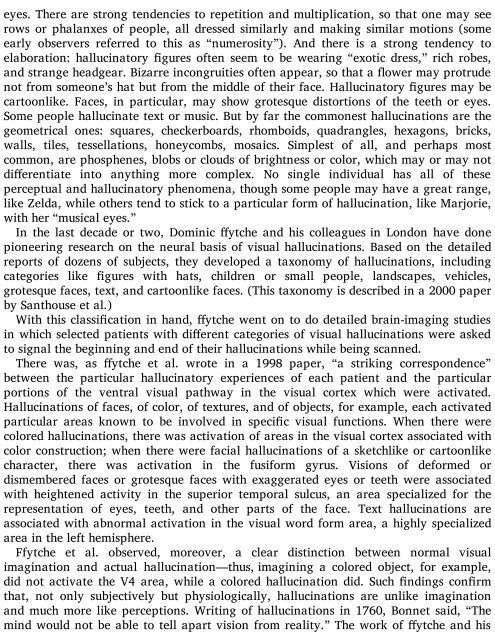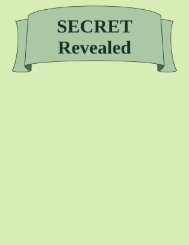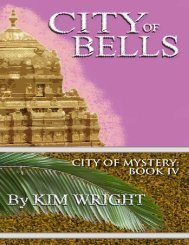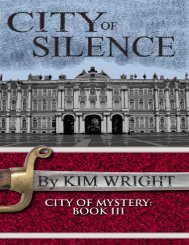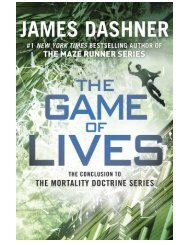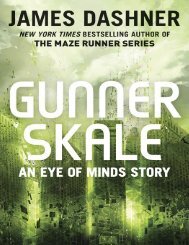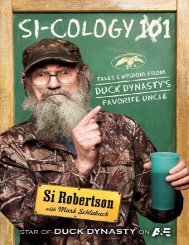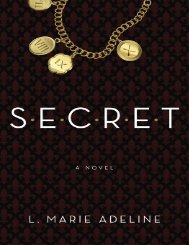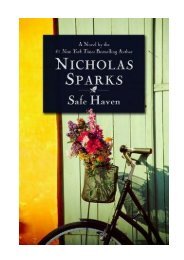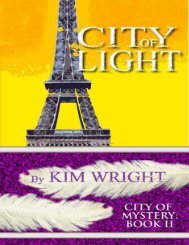32896589326509350
You also want an ePaper? Increase the reach of your titles
YUMPU automatically turns print PDFs into web optimized ePapers that Google loves.
eyes. There are strong tendencies to repetition and multiplication, so that one may see<br />
rows or phalanxes of people, all dressed similarly and making similar motions (some<br />
early observers referred to this as “numerosity”). And there is a strong tendency to<br />
elaboration: hallucinatory gures often seem to be wearing “exotic dress,” rich robes,<br />
and strange headgear. Bizarre incongruities often appear, so that a ower may protrude<br />
not from someone’s hat but from the middle of their face. Hallucinatory gures may be<br />
cartoonlike. Faces, in particular, may show grotesque distortions of the teeth or eyes.<br />
Some people hallucinate text or music. But by far the commonest hallucinations are the<br />
geometrical ones: squares, checkerboards, rhomboids, quadrangles, hexagons, bricks,<br />
walls, tiles, tessellations, honeycombs, mosaics. Simplest of all, and perhaps most<br />
common, are phosphenes, blobs or clouds of brightness or color, which may or may not<br />
dierentiate into anything more complex. No single individual has all of these<br />
perceptual and hallucinatory phenomena, though some people may have a great range,<br />
like Zelda, while others tend to stick to a particular form of hallucination, like Marjorie,<br />
with her “musical eyes.”<br />
In the last decade or two, Dominic ytche and his colleagues in London have done<br />
pioneering research on the neural basis of visual hallucinations. Based on the detailed<br />
reports of dozens of subjects, they developed a taxonomy of hallucinations, including<br />
categories like gures with hats, children or small people, landscapes, vehicles,<br />
grotesque faces, text, and cartoonlike faces. (This taxonomy is described in a 2000 paper<br />
by Santhouse et al.)<br />
With this classication in hand, ytche went on to do detailed brain-imaging studies<br />
in which selected patients with dierent categories of visual hallucinations were asked<br />
to signal the beginning and end of their hallucinations while being scanned.<br />
There was, as ytche et al. wrote in a 1998 paper, “a striking correspondence”<br />
between the particular hallucinatory experiences of each patient and the particular<br />
portions of the ventral visual pathway in the visual cortex which were activated.<br />
Hallucinations of faces, of color, of textures, and of objects, for example, each activated<br />
particular areas known to be involved in specic visual functions. When there were<br />
colored hallucinations, there was activation of areas in the visual cortex associated with<br />
color construction; when there were facial hallucinations of a sketchlike or cartoonlike<br />
character, there was activation in the fusiform gyrus. Visions of deformed or<br />
dismembered faces or grotesque faces with exaggerated eyes or teeth were associated<br />
with heightened activity in the superior temporal sulcus, an area specialized for the<br />
representation of eyes, teeth, and other parts of the face. Text hallucinations are<br />
associated with abnormal activation in the visual word form area, a highly specialized<br />
area in the left hemisphere.<br />
Ffytche et al. observed, moreover, a clear distinction between normal visual<br />
imagination and actual hallucination—thus, imagining a colored object, for example,<br />
did not activate the V4 area, while a colored hallucination did. Such ndings conrm<br />
that, not only subjectively but physiologically, hallucinations are unlike imagination<br />
and much more like perceptions. Writing of hallucinations in 1760, Bonnet said, “The<br />
mind would not be able to tell apart vision from reality.” The work of ytche and his


